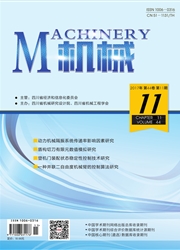

 中文摘要:
中文摘要:
分析了广泛应用于动车组车辆上的抗蛇行减振器的工作原理,将抗蛇行减振器的力学特征抽象为弹簧、阻尼单元,在Maxwell等效参数模型的基础上,考虑抗蛇行减振器油液阻尼的分段特性,同时考虑橡胶节点刚度和油液刚度,建立液压减振器的分段线性模型。在此基础上,求解抗蛇行减振器的动态阻尼与动态刚度。同时,针对应用在动车组上的某抗蛇行减振器进行动态特性试验,得到减振器的动态阻尼和动态刚度曲线。最后,将分段线性模型的计算结果与两种线性阻尼的Maxwell模型计算结果、试验结果进行对比,验证了模型的准确性。
 英文摘要:
英文摘要:
In this paper a brief review is presented on the working principle of anti-yaw damper used widely on EMUs. Based on the Maxwell model, the piecewise linear model was developed by considering the rubber joint stiffness, the oil stiffness and the piecewise characteristics of hydraulic damper. Then, dynamic characteristic test for an anti-yaw damper was carried out, from which the dynamic damping curve and the dynamic stiffness curve has been achieved. At last, comparing with the test results and conventional Maxwell model, the piecewise linear model turned out to be able to accurately reflect the dynamic characteristics of the anti-yaw damper.
 同期刊论文项目
同期刊论文项目
 同项目期刊论文
同项目期刊论文
 期刊信息
期刊信息
